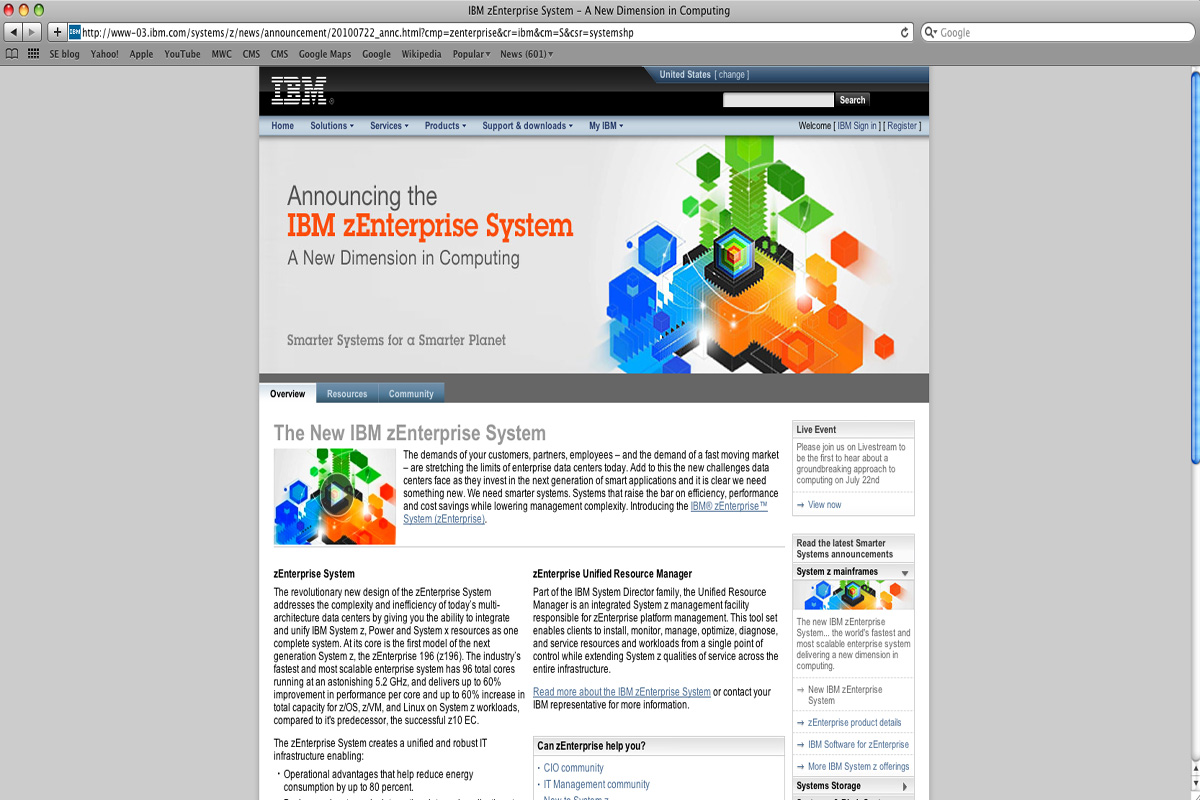IBM’s zEnterprise redefines the mainframe
Big Blue has ditched the zSeries moniker for its latest arrival.

A new generation of the mainframe is the way IBM is heralding the launch of its latest zSeries server.
In fact, the company considers it to be so revolutionary that it has ditched the zSeries name and dubbed it the zEnterprise 196.
Set to boldly go where no other mainframe has gone before, the zEnterprise has a massively upgraded specification in the left side of the cabinet and four server blade racks to the right. The codename was Griffon, after the mythical half-eagle, half-lion beast, to reflect the hardware's hybrid nature.
Gary Barnett, partner and chief technology officer (CTO) at analyst firm the Bathwick Group, said, "IBM is keeping its promise to its top 500 customers to keep the mainframe relevant. Many of these customers are in the world of finance and banking and they all have a need to ensure ease of access to their data, both for their staff and their customers. The banking world would be crazy not to jump on this."
He does not think it will stop there. "The rest of the world, probably the top 1,000 companies, will certainly take a fresh look at the mainframe," he added. "I would expect to see a business class version of zEnterprise within the next year or so at a lower entry point."
Effectively, IBM has taken the System z10 and its BladeCenter Extension (zBx) to the next level of integration.
Taking the mainframe side first, it has up to 3TB of memory driven by 5.2GHz multicore CISC chips. The 196 appellation is derived from it being the first model in what will become a range over time and its full complement of 96 cores. This delivers a performance of 50Bips or 50 billion instruction executions per second.
Get the ITPro daily newsletter
Sign up today and you will receive a free copy of our Future Focus 2025 report - the leading guidance on AI, cybersecurity and other IT challenges as per 700+ senior executives
A major departure in server architecture is the use of data striping across the memory. This is similar to RAID disk striping for data protection, so similar that IBM is calling it RAIM. This adds to the reliability of the system by ensuring that if a memory cell fails, the data is replicated elsewhere and therefore will not be lost.
-
 Cleo attack victim list grows as Hertz confirms customer data stolen
Cleo attack victim list grows as Hertz confirms customer data stolenNews Hertz has confirmed it suffered a data breach as a result of the Cleo zero-day vulnerability in late 2024, with the car rental giant warning that customer data was stolen.
By Ross Kelly
-
 Lateral moves in tech: Why leaders should support employee mobility
Lateral moves in tech: Why leaders should support employee mobilityIn-depth Encouraging staff to switch roles can have long-term benefits for skills in the tech sector
By Keri Allan